4 Change Management Best Practices (And How to Implement Them)
Nine in 10 HR leaders report that managers are not equipped to lead change communications, drive change adoption or avoid change fatigue among their teams [1].
If you’re a part of this majority, adopting change management best practices can help you avoid the pitfalls of mismanaged transformations such as burnout, employee turnover, and low productivity. In order to help you, we spoke with Shailee Williams, a technology manager at Ridge Administrative Services [2] who’s overseen many digital transformations throughout her career.
Ahead, we’ll cover four change management best practices based on our conversation with Williams and insights from Gartner so that you can navigate future transformations in a way that keeps your employees’ morale and performance as high as possible.
1. Establish the need for change
Perhaps the most important change management best practice is to know the “why” behind a change before beginning an implementation. The most successful change initiatives are those that address a pain point, which is why we suggest analyzing underperforming teams, process redundancies, and causes of turnover and disengagement when making the case for a change.
For example, if there’s a business process within your organization’s operations that’s prone to bottlenecks, there’s a legitimate need for change there. But if you’re considering making a configuration change to an existing team or process just to see how it affects performance, consider whether there’s an actual problem that action would resolve beforehand.
While there may have been a time where this approach could be passed off as innovation, the amount of change the average employee can absorb without becoming fatigued has fallen by 50% since early 2020, which means that today’s employers need to prioritize changes that truly make a positive difference for their workforce [3].
Considering a digital transformation? Prepare yourself by learning what your competitors are doing: Here's How SMBs Are Maximizing Their Software Spend in 2023.
Williams brought this point up a few times during our conversation, saying:
Shailee Williams
Technology manager at Ridge Administrative Services
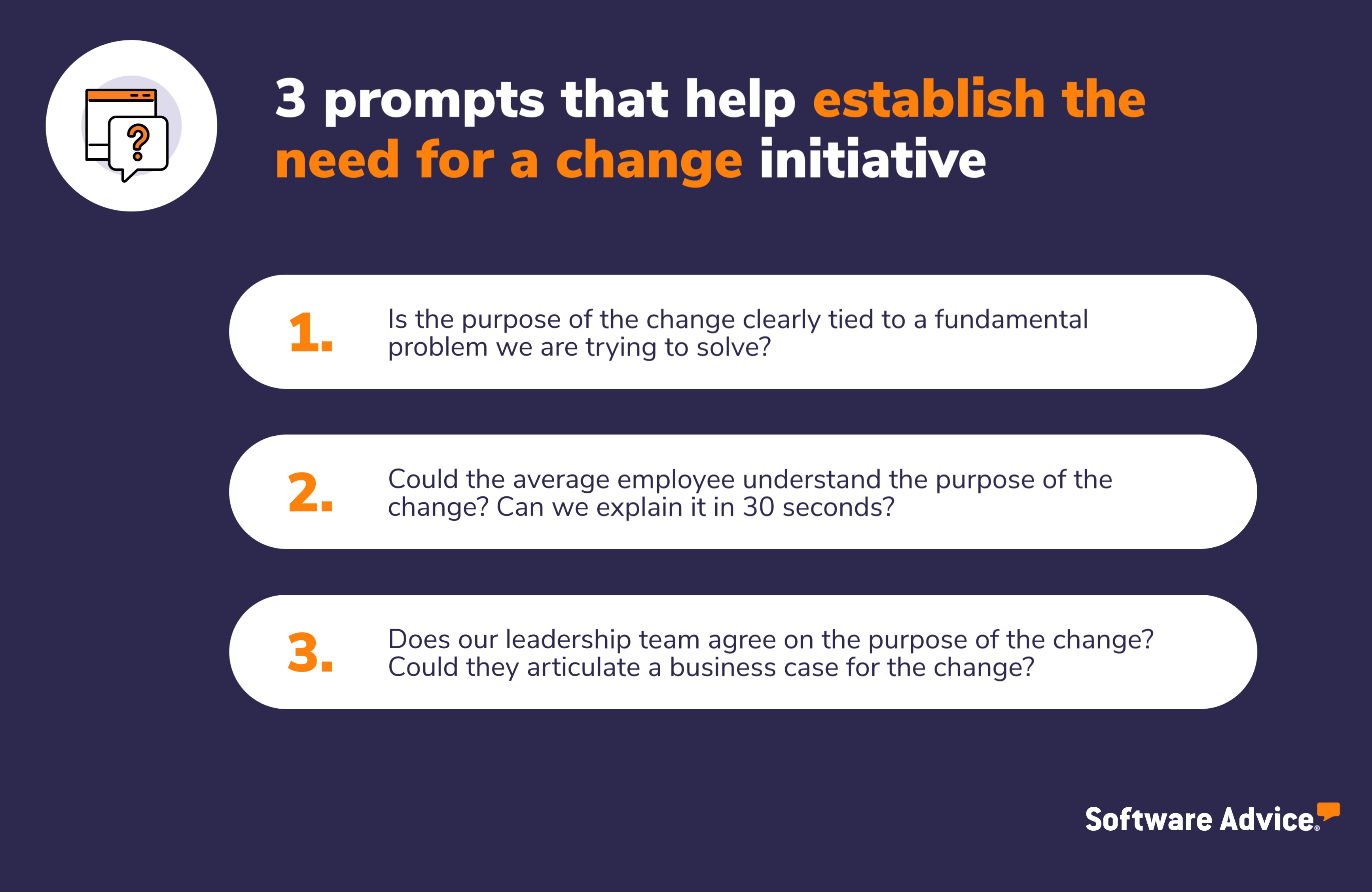
2. Elect a change sponsor
A change sponsor is an executive leader with the connections and clout required to build support around a transformation. On the importance of change sponsors, Prosci, the organization responsible for the ADKAR model of change management, says [5]:
Prosci
Learn more about the ADKAR with What Is The ADKAR Change Management Model?
The primary responsibilities of a change sponsor include:
Assisting with building a business case for the change
Helping to develop a change management plan
Communicating with those in charge of and affected by the change
Influencing the workforce to support and participate in the change
In her role as a technology manager, Williams often serves as a change sponsor—mostly working with employees to make sure they want to make a change and that there’s a real need for it. She says:
Shailee Williams
When electing a change sponsor, look for a well-liked leader within the organization who has experience working with the team or department that’s affected. For example, if the change at hand involves adopting a new content management system, a marketing leader such as creative director would make for an effective change sponsor.
3. Use (or create) a change framework
Taking a structured approach to change increases your chance of success [5]:
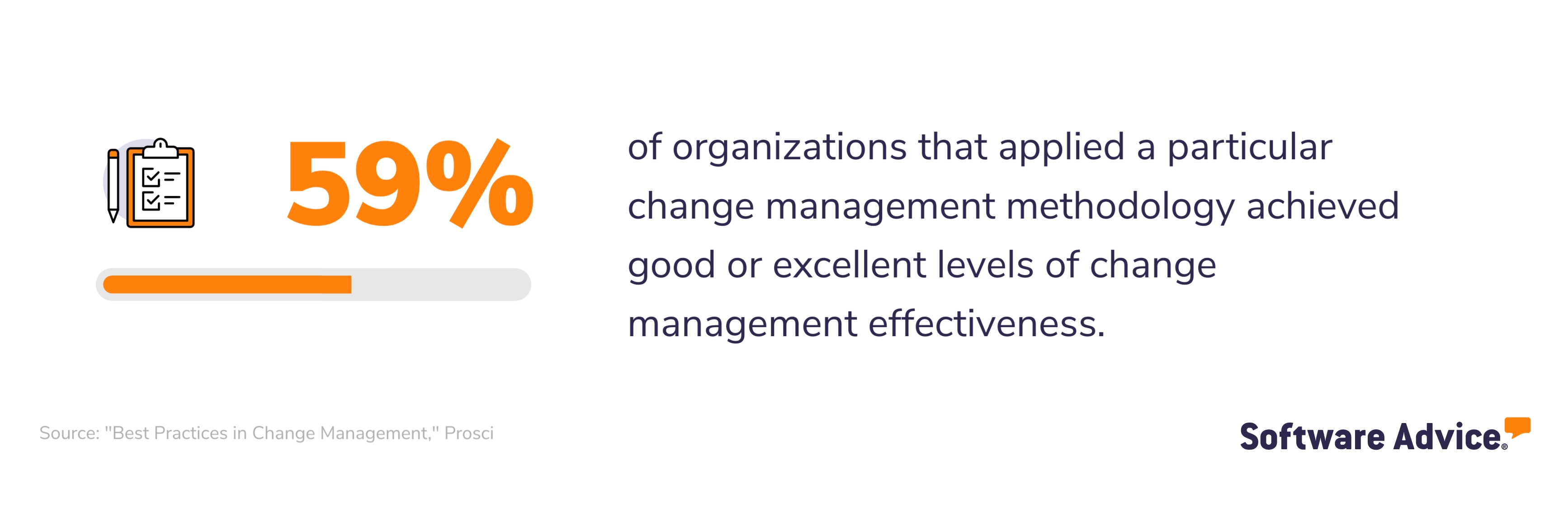
Fortunately, the majority (69%) of organizations currently use a change management methodology for either general guidance, as a checklist for activities, to monitor progress, or for all of the above [5].
Even still, some change management methodologies work better than others in today’s work environment. For example, an open-source (or bottom-up) approach is almost always received better by employees than a top-down directive. Williams explains:
Shailee Williams
At the very least, creating a change management plan will help keep those involved focused on the goal of the initiative and the steps it will take to get there.
4. Use software to support change efforts
Williams is a big proponent of project management tools. During our conversation, she talked about a client who was managing their growing business’s operations through spreadsheets and email:
Shailee Williams
Williams’ push for project management software was rooted in real benefits. Executives would have access to approvals tracking and audit trails, and managers whose teams were overloaded would have a new way of visualizing their employees’ workloads.
Shailee Williams
Failing to provide appropriate tools and resources for employees is a common mistake made by organizations:
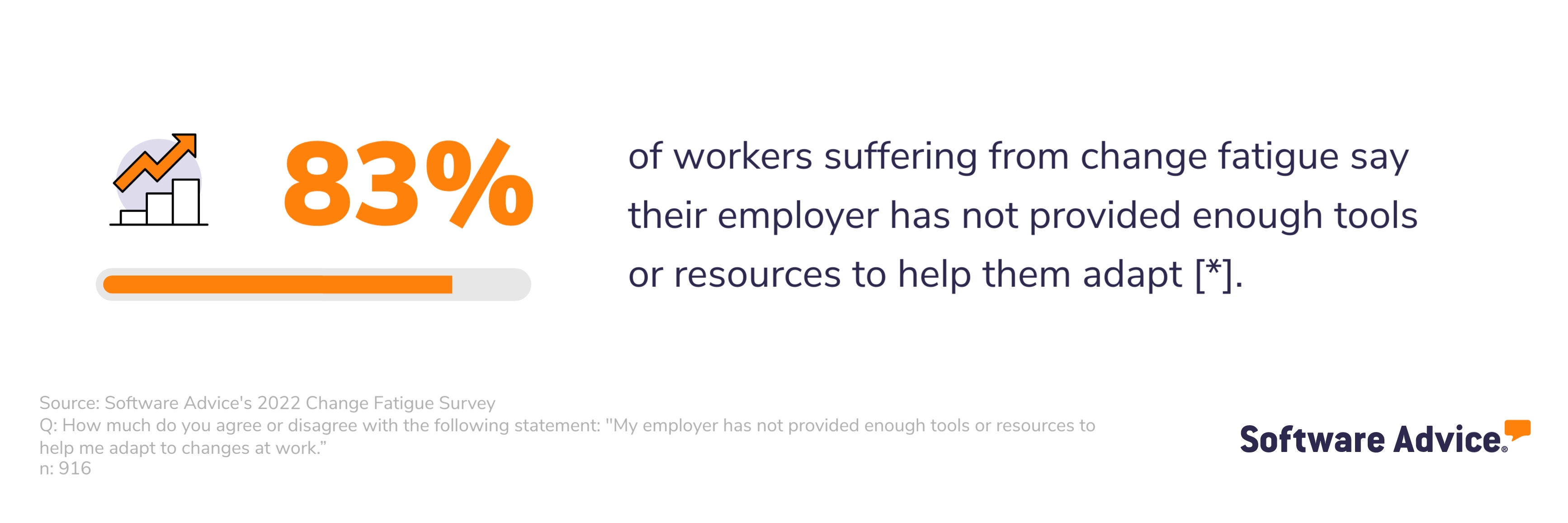
Whether the change initiative involves adopting a new tool (as was the case for Williams) or reconfiguring an existing workflow, you need software to successfully communicate with those involved, plan each step of the change process, and track progress along the way.
Here are a few tools that can be useful during the change management process:
Project management software: There are hundreds of PM tools on the market, from free online task trackers to highly complex project management tools that allow users to manage every aspect of a project, from business case creation to final payment.
Change management software: Designed to support and facilitate organizational change, this software assists in planning, implementing, accelerating, and tracking changes, ensuring a structured and systematic approach to organizational change management.
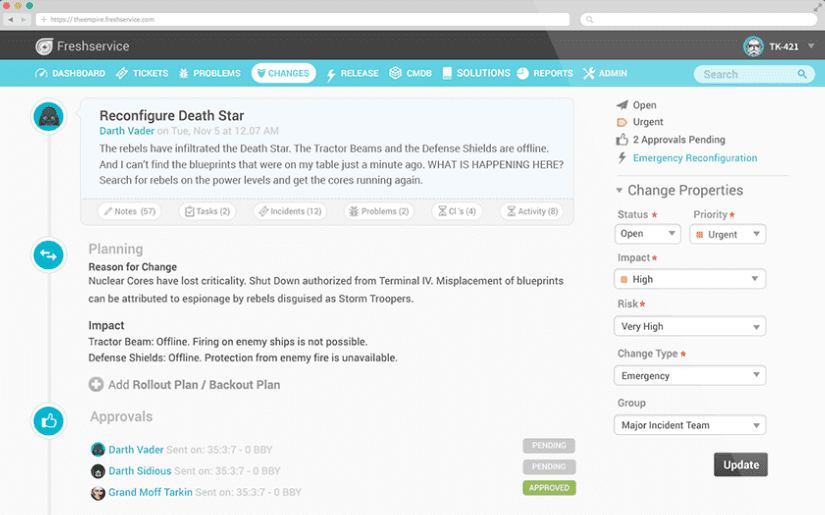
An example of a change project managed in Freshservice [6]
Internal communication software: If you’re a team lead or a manager, dealing with unorganized communications can become one of your biggest challenges—which is all the more concerning in the midst of a change effort. Communications tools can help by enabling file sharing, instant messaging, voice chat, and video conferencing.
78% of employees expect constant change to happen at their job moving forward
As Heraclitus once said, “the only constant in life is change,” and today’s employees don’t expect the rapid pace of change to slow down anytime soon. Use the four best practices in this guide to develop an effective change management strategy that minimizes the risk of change fatigue for your employees.
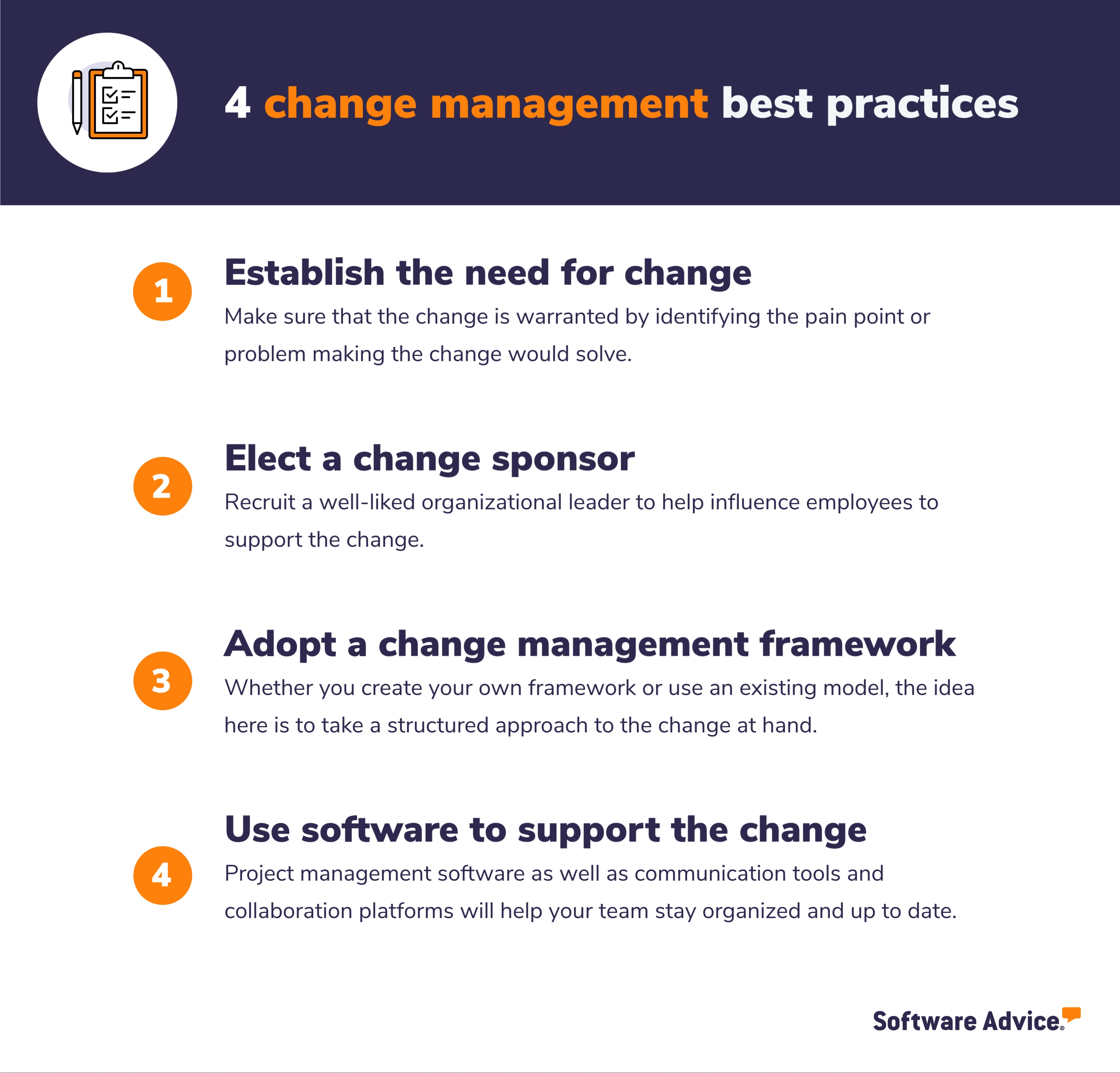
In the meantime, check out this related content: A Guide to Fostering Resilience in the Workplace.
Note: The screenshots of applications included in this article are examples to show a feature in context and are not intended as endorsements or recommendations.
Note: Questions and responses have been edited for brevity and clarity.
Survey methodology
*Software Advice’s 2022 Change Fatigue Survey was conducted in March 2022 among 970 U.S. employees representative of the U.S. workforce by age, race, and gender. Respondents had to be with the same employer since the start of the COVID-19 pandemic. The goal of this survey was to learn how employees have responded to changes at their job over the course of the pandemic.